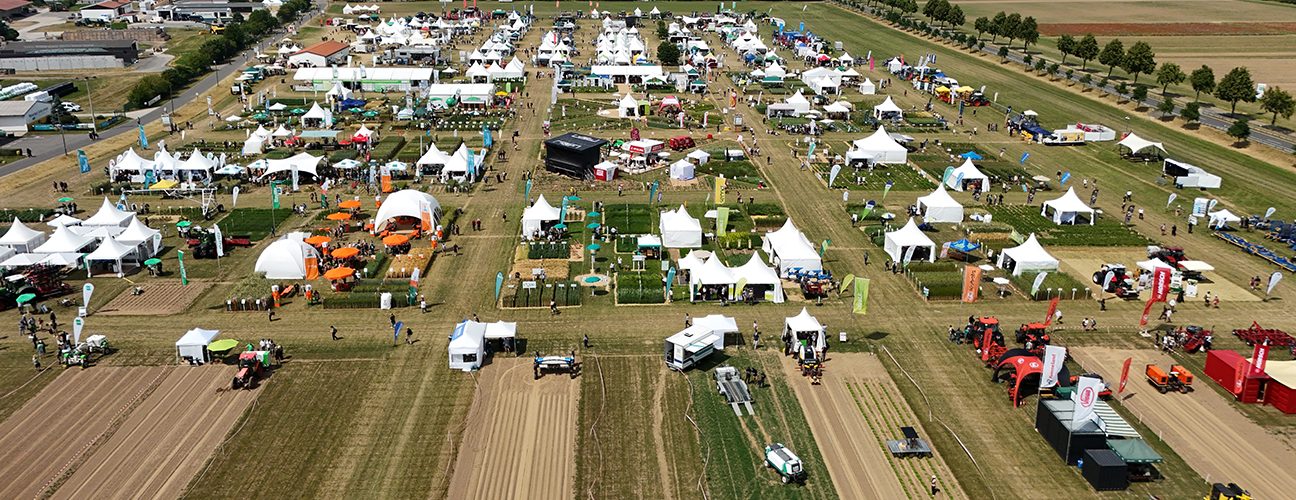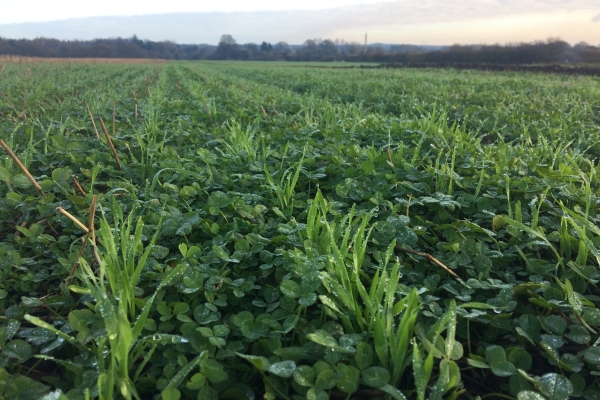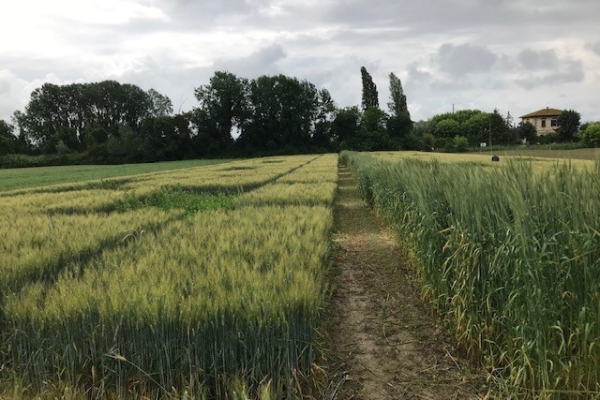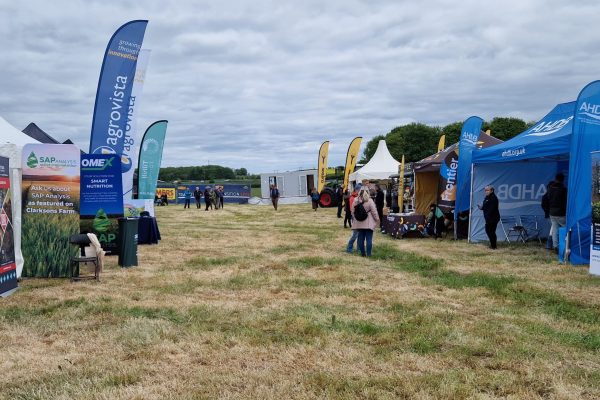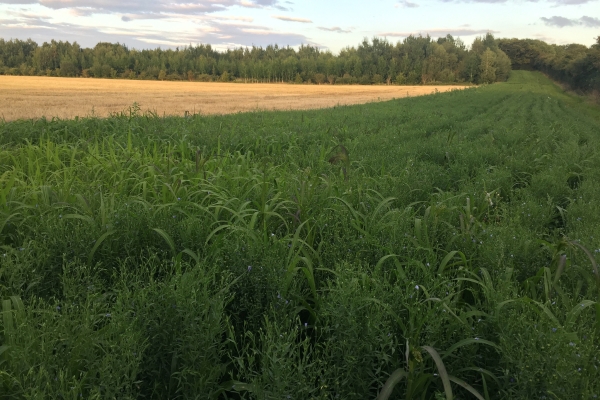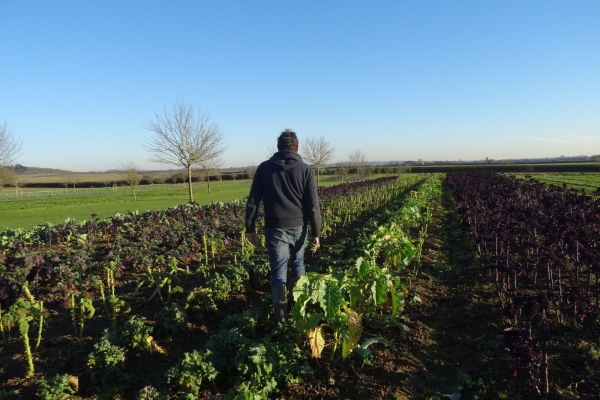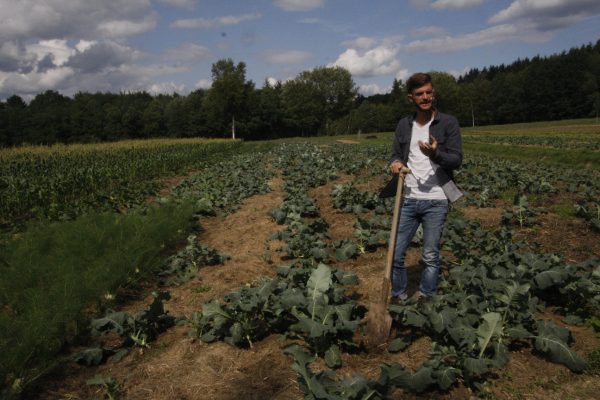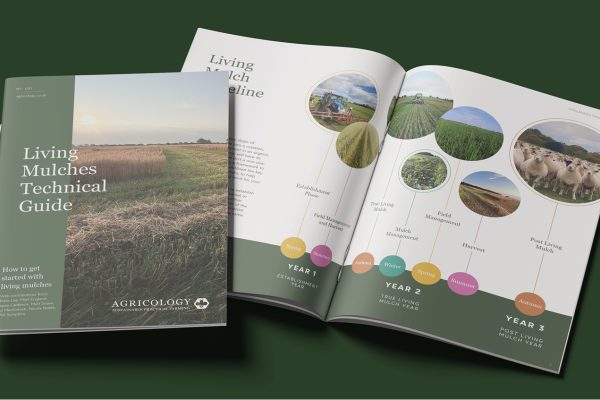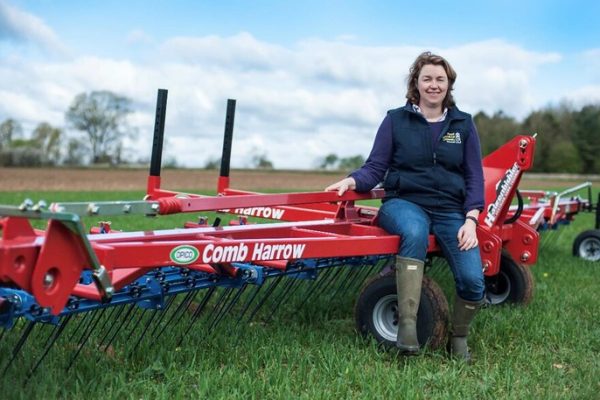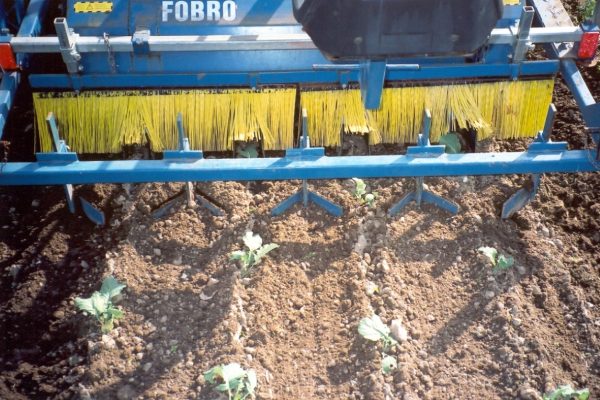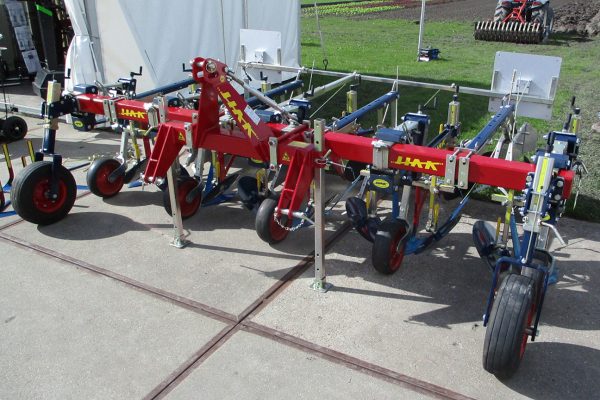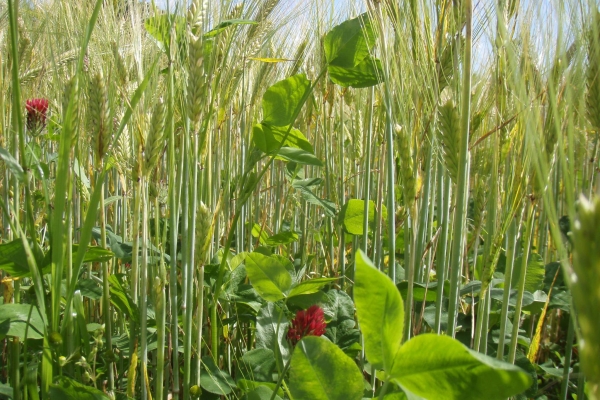Innovations in organic farming showcased at Germany’s Organic Field Days
The German organic farming industry is leading the way with innovations in robotics, machinery and farming practice. The 5th Öko-Feldtage (Organic Field Days), a biennial meeting point for the organic farming sector was held near Leipzig on 18-19 June and demonstrated the resilience of the sector with over 5,000 visitors on the first day. Spread over 30 hectares (ha) with 362 exhibitors, around 650 demonstration plots, 40 machine demonstrations, 64 expert presentations, 57 workshops and network meetings and 130 guided tours, it is an impressive event. 19 innovations showcased new concepts to future-proof agriculture.
Water was the theme, with the Organic Field Days hosted by the Wassergut Canitz estate, a daughter company of the Leipzig Waterworks, which has been organic for over 30 years, demonstrating how organic farming, animal welfare and water protection can work together. The role of organic farming in protecting water supplies is being increasingly recognised with water companies actively promoting organic farming (See briefing highlighting the benefits of organic farming for water resilience). The OOWV (Oldenburg- East Friesian Water Board) also offers conventional maize growers free complete weed control services using the latest generation of weed harrows and hoeing equipment to reduce herbicides which have been frequently detected in the near-surface groundwater in the region and pose a potential threat to the quality of the drinking water.
Transfer mulch – a miracle material for pests, weeds and water shortages?
One novel practice is the use of ‘transfer mulch,’ which has been shown to increase the yields of maize, potatoes and winter wheat while improving water infiltration and protecting cultivated soils from erosion. Stefanie Pencs (Saxony State Office for Environment, Agriculture and Geology – LfULG) presented the results of several years of trials on the practice in Saxony. Transfer mulch refers to plant mowings such as straw or forage legumes, which are collected from a donor area and then spread fresh or preserved as a mulch layer on a target area (recipient area). Depending on the type of recipient crop, the transfer mulch is spread over the emerging crop, or the crop is planted into the mulch. Incorporation of the applied material is also possible.

By applying the forage legume material as transfer mulch to cereal and root crop areas (recipient areas), the nutrients it contains are transferred directly, i.e., without passing through animal stomachs and manure, to the non-legumes. At the same time, the removal of the clippings from the legume area (donor area) increases the nitrogen (N) fixation capacity there. On the receiving area, the mulch protects the soil from wind and water erosion and increases soil moisture and infiltration capacity.
When planning the use of transfer mulch, the ratio between the donor area (grass/clover) and the recipient area (such as maize or potato fields) should generally range from 1:1 to 2:1. In cases where low plant growth is expected, such as during drought conditions, higher donor-to-recipient area ratio may be necessary. It’s important to note that transfer mulch contains high levels of N (120-180 kg/ha in 30 t/ha fresh grass/clover), so care must be taken to adhere to the maximum permissible N application rates.
The timing of mulch application is crucial. Grass/clover should be cut shortly before flowering to ensure a higher carbon-to-nitrogen (C/N) ratio and to avoid seed contamination. For maize, mulch should be applied shortly before crop emergence, ideally following flame weeding. In the case of potatoes, particularly in cooler regions, mulch should be applied just before emergence, with weed control managed by hoeing up until that point. For winter wheat, mulch should be applied shortly before stem elongation, with a maximum N application rate of 60 kg N/ha.
Mulch should not be used in areas infested with perennial weeds, as these may be promoted by the mulch layer. Prior to mulch application, standard weeding measures can be undertaken. Once applied, the mulch will suppress weeds effectively, provided that the soil surface is completely covered.
However, as promising as the practice seems, there are some issues of N losses which have not yet been explained – research is ongoing.
Innovations:
The demonstration areas for machines, autonomous robots, and AI-controlled technology showed how organic farming is future-proofing itself and how it manages the balance between modern technology and tradition. The numerous examples of innovations, from laser weeding robots in vegetable fields to weed control with targeted water jets in grassland, demonstrated the innovative strength of the industry.
Acticut: This machine from 4Disc provides ultra-shallow and full-surface soil cultivation, from 1 cm with horizontally rotating discs. The constant rotating motion of the sharp discs creates an active cut that cuts through the organic matter precisely at the root collar and does not tear it out with the root ball.
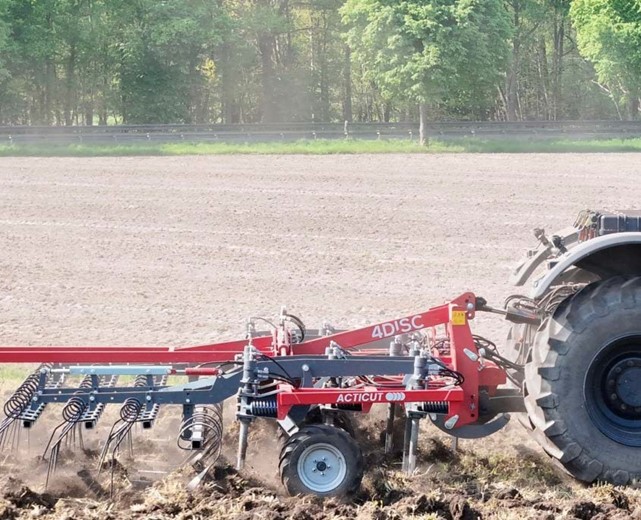
Carbon Tillage Plough: As part of the Carbon Tillage project, Lemken have produced a reversible plough functional prototype for partial topsoil deepening.
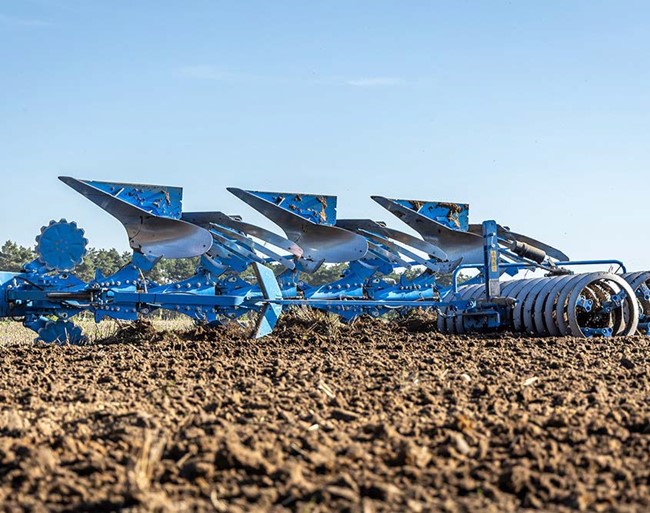
Caterra Grasshopper: The Swiss firm Caterra has developed an innovative laser weeding robot that autonomously drives through vegetable fields and removes weeds. Due to its lightweight design and protected treatment area, the robot can be used in wet conditions, at night, and even in winter. The robot is currently in use on five crops (carrots, onions, chicory, fennel, and spinach); over ten more crops will be added over the course of 2025. A total of eleven machines will be in use by vegetable farms and contract weeding companies in 2025. The official market launch is planned for 2026.
Kelvin R370: This machine from TIEFGRÜN Precision Weeding detects plants in real time using a 3D camera and reliably distinguishes crops from weeds. It uses state-of-the-art image classification based on deep learning algorithms. It precisely destroys weeds by applying a short jet of hot water at a temperature of over 96°C. Carrot plants are simultaneously sprayed with a jet of cold water, thus protecting them from splashing or running hot water. Even weeds growing just a few millimeters away from the crop are reliably controlled without damaging the crop. The KelvinR370 covers four rows at a working width of three meters and is designed as a mounted implement. Currently, the Kelvin can be used on carrots, with other crops to follow.

LaserWeeder: The LaserWeeder from Carbon robotics uses advanced computer vision technology and AI-powered deep learning models to identify weeds and crops in real time. The cameras can quickly and accurately determine the location of weeds using AI models, and then determine the most appropriate eradication strategy.
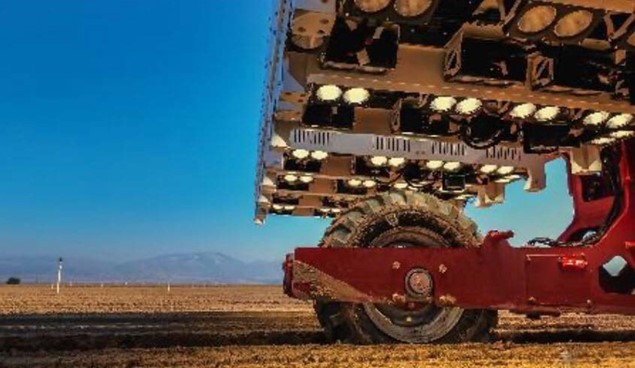
Einböck CHOPSTAR-MULCH: This machine is developed for hoeing in mulch and strip-till systems, capable of working efficiently even in crops with a high proportion of organic matter.
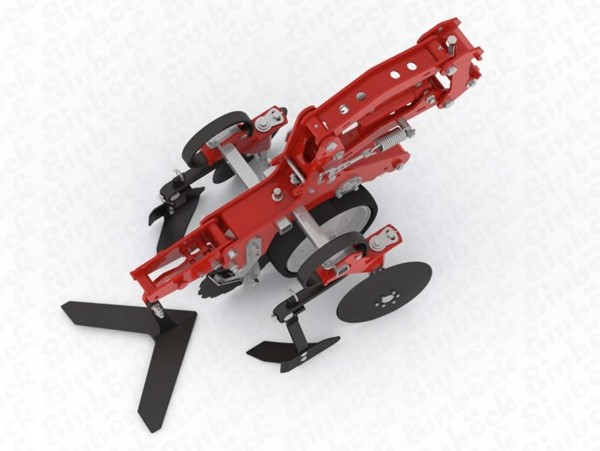
Einböck cross-ridge tool: The newly developed cross-ridge hiller can be mounted behind any hoeing element of a cultivator. Its primary purpose is to create cross-ridges in row crops with a width of 50 to 80 cm (such as corn, sunflowers, or potatoes). This useful additional tool is mechanically driven by a spur wheel, while the size of the cross-ridges can be adjusted to suit the specific conditions. Useful on areas prone to erosion, such as slopes, the cross-ridge hiller serves as a natural barrier or earth mound to prevent soil erosion and conserve water.
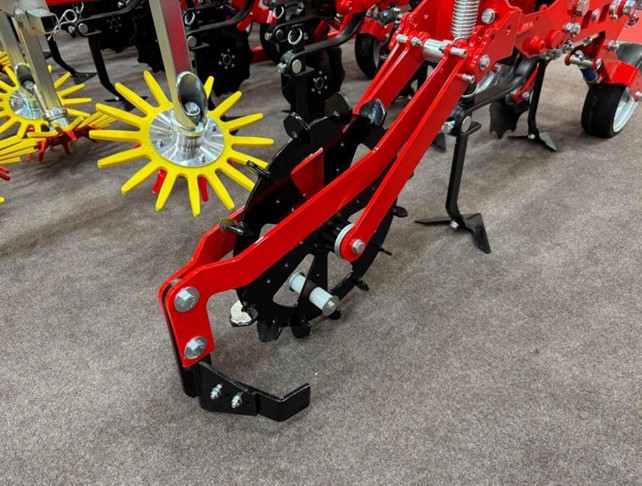
Saphir GrindStar: The GrindStar rotary grinder was designed for ultra-flat post-harvest (arable) management across the entire area.
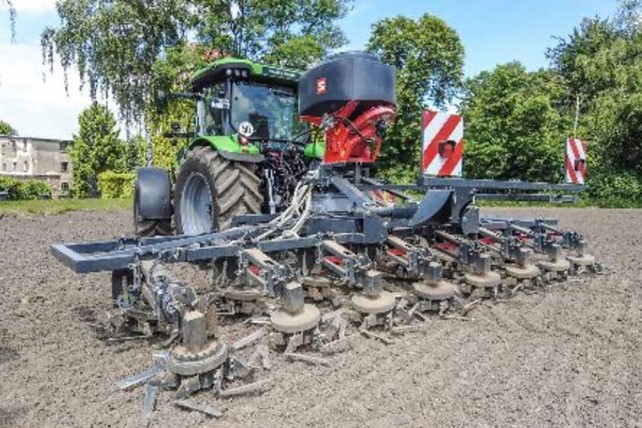
ThulitMF: The Thulit MF tine harrow from Lemken is equipped with the flexible OptiTine hydraulic system, ensuring consistent tine pressure throughout the entire working path. It operates without clogging, even with large amounts of organic matter.
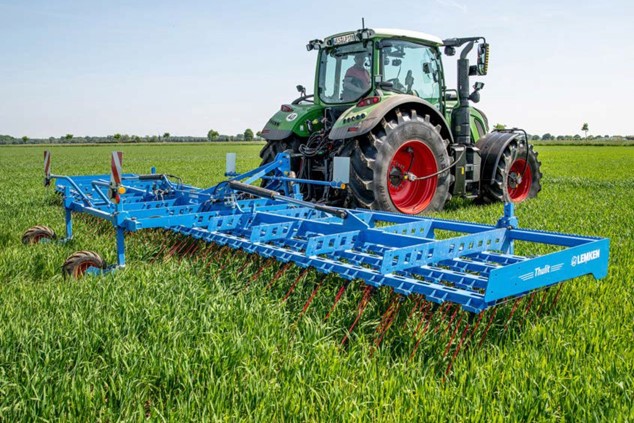
The Tipard 1800 multi-carrier: The Tipard 1800 multi-carrier platform is a gantry vehicle that always guides the attachment centrally within the axles and enables precise tracking of the attachment as well as immediate reaction to obstacles. The hydraulic chassis with levelling system adapts to different terrain conditions and ensures a smooth ride. This allows even sensitive, camera-guided systems to perform their precision-dependent tasks without disruption.
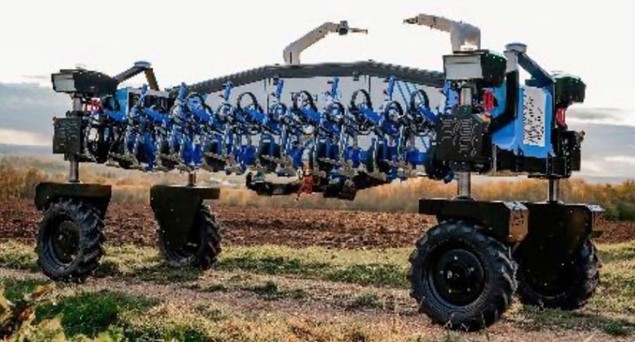
Valera crate transporter from Ant Robotics is a fully autonomous crate transporter that transports up to 650 kg of harvested crops from the pickers to central collection points. Using optical recognition technology, it navigates autonomously and precisely along crop rows, increasing productivity by 30–40% (in kg/h) – without any external infrastructure.
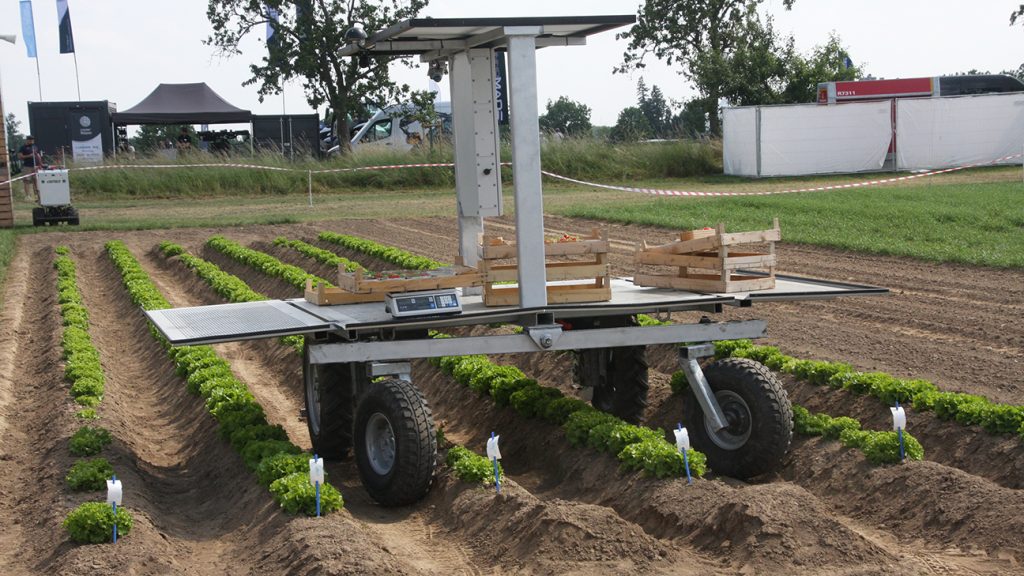
See full list of innovation examples (in German) here.
Reflections
Despite challenges that the German organic farming sector faces with the rate of conversion not increasing as fast as some would like, the organisers were pleased with the record number of exhibitors, and the fact that a quarter of the visitors are farming conventionally, demonstrating how open the exchange is. Saxony Agriculture Minister Georg-Ludwig von Breitenbuch (CDU) stated that the Saxony Government, together with the new federal Government, remains committed to achieving the 30% organic farming target by 2030 as part of the German Sustainability Strategy and therefore aims to strengthen the competitiveness of organic farming. Youth played a prominent role in the Organic Field Days with the Organic Future Camp’s visions of the future presented to a representative from the Federal Ministry of Agriculture, Food and Home Affairs. This, together with the industry’s innovative spirit, and the continued growth of the organic market in Germany, bodes well for the future.
